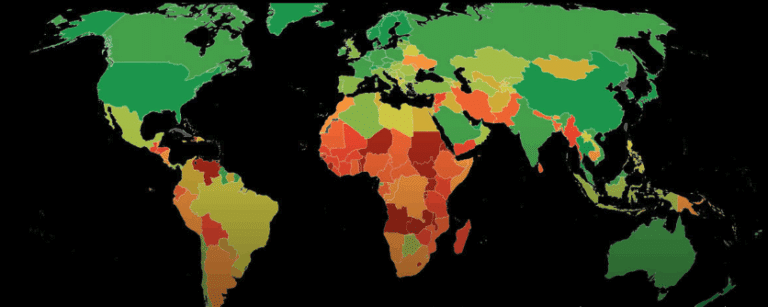This event summary reflects the authors’ understanding of key points made in the course of the discussion. It does not necessarily represent the views of the Center on Global Energy Policy. The summary may be subject to further revision. Contributions to SIPA for the benefit of CGEP are general use gifts, which gives the Center discretion in how it allocates these funds. More information is available at https://energypolicy.columbia.edu/about/partners. Rare cases of sponsored projects are clearly indicated.
India is the most populous country in the world, having surpassed China in April 2023,[1] and is forecast to become the second-largest economy by 2050,[2] with its energy consumption projected to grow about 1.5 times faster than the global average over the next three decades.[3] Ensuring that this growth in energy demand is sustainable is central to achieving the nation’s developmental goals as well as maintaining the global carbon budget.[4] In this context, India has made significant policy choices in developing a more inclusive and sustainable energy system over the past few years.[5]
On May 18, 2023, the India Program at the Center on Global Energy Policy (CGEP) at Columbia University’s SIPA held the Columbia India Energy Dialogue in partnership with the Columbia Global Center in Mumbai. The event, held under the Chatham House Rule, covered several key aspects of India’s energy and climate strategy and fostered discussion about the policy choices that face India in its energy transition. Participants included senior policy makers, corporate executives, civil society representatives, analysts, and experts from academia and think tanks.
The following summary compiles key issues raised during the event.
The Domestic and International Context of India’s Energy Policy
The discussion began with a speaker noting that in the past decade India has made remarkable progress toward eliminating energy poverty and developing decarbonization pathways for a clean energy transition. The speaker added that growth in India’s non-fossil fuel capacity has been over 10 gigawatts (GW) per annum for the past seven to eight years. They cautioned, however, that to achieve the 2030 target of non-fossil fuel capacity of 500 GW, significantly more effort and investment will be needed to bring in additional capital, build appropriate infrastructure, and develop suitable skill sets in the local labor force. Other attendees noted that while the efforts required for a just and sustainable energy transition are not unique to India, the country will need to undertake massive efforts given that it is one of the most populous countries in the world and an emerging economy poised to grow significantly in the coming decades.
In terms of India’s energy mix, some speakers suggested that the country could gradually reduce its coal generation capacity while expanding its nuclear generation capacity. Another suggestion was for India to transition from fossil fuels to natural gas in its major freight transportation corridors. There was considerable excitement among speakers about the potential for growth in the adoption of electric vehicles, particularly in the two- and three-wheeler vehicle segments in both urban and peri-urban areas. Speakers were eager to see how India will develop its energy mix to ensure access to reliable and affordable energy to every citizen.
Speakers discussed how India’s decarbonization strategies might or might not be understood in comparison to those adopted by other countries, with a speaker highlighting that the impacts of climate change have affected some countries more than others. Some participants said that decarbonization pathways of different countries cannot be compared because of vastly diverse levels of historical emissions and patterns of growth and development; it was argued that countries with historically large emissions should focus on accelerating their decarbonization efforts.
The conversation also focused on the intersection of India’s energy policy and geopolitics. India holds the G20 presidency during 2023, which attendees felt could potentially result in greater cooperation among member countries to develop and deploy greener and more efficient technologies. With respect to India’s energy security strategy in light of the G7 sanctions on Russia, a speaker noted that India played a key role in maintaining the balance of global oil markets while complying with sanctions requirements, potentially helping to mitigate significant price hikes and disruptions. That speaker emphasized that, from the perspective of building energy security for the future, India will need to identify and strengthen international supply chains for critical minerals.
Financing the Green Energy Agenda
A speaker highlighted the importance of balancing the energy transition with economic growth. The panel discussed a recent International Monetary Fund blog by Margaux MacDonald and John Spay that highlights two key avenues to significantly reduce emissions in India: increasing subsidies for renewable energy and introducing a carbon tax.[6]
A speaker mentioned that they expect carbon markets in India will be fully operational in around six to seven years, once the government bridges gaps in the present Renewable Energy Certificates[7] and Perform, Achieve, Trade programs.[8] The panel felt that the European Union’s Carbon Border Adjustment Mechanism presents India with opportunities to modernize its industrial processes in the sectors that the EU will target. Speakers also emphasized the importance of focusing on an economy-wide transition and bringing in end-user segments such as industries, the transportation sector, and the buildings sector. Another speaker pointed out how Indian companies have recently begun influencing the supply side of carbon pricing through shadow pricing and the incorporation of carbon prices in their project selections.
Commenting on this year’s Union Budget, which focused on green strategies and policies, a speaker argued that a green budget represents a positive sign that could help synchronize the green energy efforts of different ministries and departments. Providing policy signals to boost private capital in India’s energy transition will be important to bridge financing gaps, continued the speaker. According to the speaker, the private sector’s demand for renewable electricity to meet India’s 2030 renewable electricity targets is linked to corporate sustainability targets. The discussion by the panel on India’s Green Hydrogen Mission highlighted the need for stronger demand-side mechanisms to ensure offtake, emphasizing that the present policy will need to be strengthened to achieve a faster pace of production.
Participants evaluated different avenues for structuring financial instruments that would be sufficiently attractive to investors. Speakers discussed how green bonds could be leveraged as key sources of green financing in India and agreed that the country must look at scaling up investments and promoting foreign participation to increase capital availability. Participants agreed that for the green bonds market in India to develop, it would be important to have a dedicated committee that facilitates the expansion of the domestic green bond market in India as well as the introduction of suitable regulatory frameworks.
To accelerate the financing of new energy projects, such as offshore wind projects, attendees suggested that multilateral agencies and the government could help de-risk capital for investors, thereby encouraging private capital to flow in. In the past, investors from different sectors—from existing fossil fuel investors and pension funds investing in renewables to investors seeking returns on longer-term projects—have shown interest in such technologies.
Technology Solutions for Green Growth
Participants observed that the conversation around the just energy transition has evolved from focusing only on mitigating climate risks to also addressing the creation of opportunities and technologies for a cleaner transition.
One strand of discussion focused on offshore wind and opportunities to scale this both within India and at a global level. A speaker highlighted that India’s technical capacity for offshore wind energy is 170 GW, specifically off the coast of the states of Tamil Nadu and Gujarat. According to the speaker, offshore wind has also proven to be a catalyst for industrial development in other countries. However, allocating the seabed for these projects could be challenging, given overlapping and competing interests of different stakeholders. Other attendees noted that, from an environmental perspective, the impact of offshore wind on the definition of net-zero biodiversity (the long-term impact on local biodiversity due to such large-scale projects) is still evolving. The panel also touched upon how some lessons from the offshore and deepwater oil and gas sector could be adopted by the offshore wind energy sector as it continues to develop. For India to ramp up its offshore wind energy production, participants suggested that India adopt multi-stakeholder, mission-driven partnerships that would include the government, industries, and other relevant institutions, as this model has worked successfully in other countries. Speakers also underscored that it would be essential that India develops a clear roadmap for the production and allocation of wind energy and coordinates between the central and state governments.
Nuclear energy was also discussed as a reliable and safe alternative to fossil fuels. A speaker described India’s current nuclear power program in detail, including the establishment of research units and industrial facilities, human resource training and development, and commissioning standardized nuclear power plants across the country. The speaker also noted that while India has made good progress and mastered using pressurized heavy-water reactors, large-scale capacity addition is now required for India’s clean energy transition. Recent developments in the Indian nuclear energy space, including the signing of joint venture agreements (particularly between the Nuclear Power Corporation of India and the NTPC, formerly known as the National Thermal Power Corporation),[9] were noted as changes that should allow the government to pool finances efficiently and to leverage sites of retired thermal plants for nuclear generation. Attendees also discussed opportunities afforded by small modular reactors, as they are easy to assemble and deploy, and do not have as many location restrictions as large-scale reactors. Participants agreed that combining nuclear and hydrogen projects could provide a solution to intermittency in the power grid, but that more incentives and benefits for nuclear energy generation will be necessary. Dialogue members also discussed potential considerations regarding the possibility of licensing and ensuring the economic viability of imported nuclear technology.
India’s Ambitions and Global Risks
It was noted that India has set ambitious clean energy targets for 2030, 2047, and 2070, and that these goals will require India to make some big bets today while focusing on coordination at three levels: public and private sectors, central and state governments, and domestic and global needs. Attendees highlighted that an important challenge for India will likely be to ensure the flow of green financing, which could help the country achieve its targets in a timely manner; however, they noted that such green financing will also depend on how the global financing architecture evolves in the coming years. Additionally, dialogue members anticipated that the adoption of innovative technologies being developed and deployed will play a key role in accelerating the pace of India’s transition. Participants agreed that India achieving its clean energy targets has become critical not only for the country itself but also for the rest of the world, especially for developing nations that hope to follow in India’s footsteps in the years to come.
About the Authors
Sneha Kailash is a Research Assistant with the India Program at the Center on Global Energy Policy and is a second year MPA candidate at Columbia University’s School of International and Public Affairs.
After qualifying as a Chartered Accountant from the Institute of Chartered Accountants of India, she worked with Deloitte India’s Business Valuation practice in Mumbai for two years. She then pivoted to the social impact sector where she worked with Sattva, one of India’s leading social impact strategy consulting organizations, for 3.5 years. At Sattva, she was a part of the Corporate Advisory team, which assisted India’s leading corporates with their Corporate Social Responsibility including strategy, implementation and program management, and impact measurement.
Dr. Kaushik Deb is a Senior Research Scholar at the Center on Global Energy Policy at Columbia University’s School of International and Public Affairs, where his research focuses on policies to achieve a just and efficient energy transition in developing countries, especially the role of oil and gas markets. Prior to joining the Center, Kaushik led the Markets and Industrial Development Program at the King Abdullah Petroleum Studies and Research Center in Riyadh, managing the Center’s engagement with Saudi Arabia’s Ministry of Energy in supporting the development of short and long term strategies for oil and gas markets to achieve the Kingdom’s energy sector objectives.
Before this, Kaushik was the Head, Global Gas Markets in Group Economics in BP overseeing analysis that formed the basis for the investment and trading strategy of the company in natural gas. He also led the gas sections of BP’s flagship publications, the Statistical Review of World Energy and the Energy Outlook. Prior to BP, at IDFC (now IDFC Bank), his portfolio included policy research and advocacy on infrastructure and environmental economics issues such as low carbon infrastructure, decentralized electricity services in rural areas, and organized intermediate public transport systems for small towns. He has also guided and implemented research in applied economics in TERI (The Energy and Resources Institute) and was the Programme Director of the MBA Programmes at TERI University.
Kaushik has a Doctor of Science degree from ETH Zürich and a Master of Arts in Economics from the Delhi School of Economics.
[1] United Nations Department of Economic and Social Affairs, “Policy Brief No. 153: India Overtakes China as the World’s Most Populous Country,” April 7, 2023, https://www.un.org/development/desa/dpad/publication/un-desa-policy-brief-no-153-india-overtakes-china-as-the-worlds-most-populous-country/.
[2] Organization for Economic Cooperation and Development Data, “Real GDP Long-Term Forecast,” https://data.oecd.org/gdp/gdp-long-term-forecast.htm.
[3] International Energy Agency, World Energy Outlook 2022, https://www.iea.org/reports/world-energy-outlook-2022.
[4] “The Present and Future of Energy in India with Kaushik Deb,” Energy Security Cubed, May 18, 2023, https://soundcloud.com/user-609485369/energy-security-cubed-the-present-and-future-of-energy-in-india-with-kaushik-deb.
[5] Some of the key policy announcements are the COP26 National Statement (https://pib.gov.in/PressReleseDetail.aspx?PRID=1768712) and the revised Nationally Determined Contributions (https://unfccc.int/sites/default/files/resource/INDIA_%20BUR-3_20.02.2021_High.pdf ), schemes to ensure universal access to electricity (https://pib.gov.in/PressReleaseIframePage.aspx?PRID=1907728) and increasing availability of liquid petroleum gas for cooking in rural areas (https://www.pmuy.gov.in/about.html), increase the share of natural gas in the energy mix to 15 percent (https://pib.gov.in/PressReleasePage.aspx?PRID=1844630), the Faster Adoption and Manufacturing of Hybrid and EV (FAME) scheme (https://www.pib.gov.in/PressReleasePage.aspx?PRID=1882097), energy independence by 2047 (https://pib.gov.in/PressReleasePage.aspx?PRID=1746062), and a National Hydrogen Mission (https://mnre.gov.in/img/documents/uploads/file_f-1673581748609.pdf ).
[6] Margaux MacDonald and John Spray, “India Can Balance Curbing Emissions and Economic Growth,” International Monetary Fund, March 7, 2023, https://www.imf.org/en/News/Articles/2023/03/06/cf-india-can-balance-curbing-emissions-and-economic-growth.
[7] Renewable Energy Certificate Registry of India, “Frequently Asked Questions,” 2010, https://www.recregistryindia.nic.in/index.php/publics/faqs.
[8] Bureau of Energy Efficiency, “Perform, Achieve and Trade,” accessed July 28, 2023, https://beeindia.gov.in/en/programmes/perform-achieve-and-trade-pat.
[9] NTPC Limited, “Joint Venture (JV) and Subsidiary Companies,” https://www.ntpc.co.in/business-development/joint-ventures-and-subsidiaries-various-sectors.





